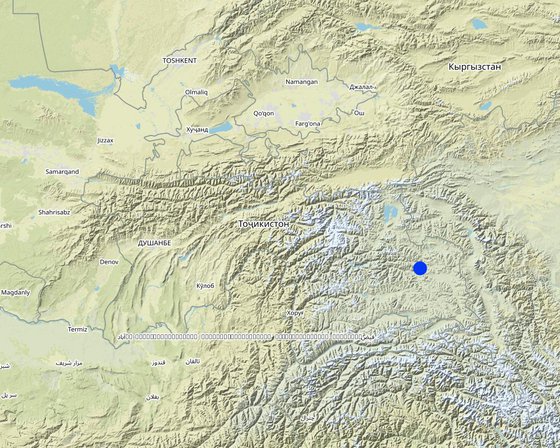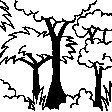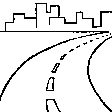



Well insulated doors and windows are installed together with thermal insulation of the ceilings and floors in houses in the remote villages of the Gorno-Badakhshan Autonomous Region. Improved quality windows and doors, as well as improved thermal insulation of the houses contribute to retain the heat inside, which is one of the main problems in many of these traditionally built houses. The quality of the materials used to produce the products as well as the quality of the product itself and its installation process are ensured through using locally trained craftsmen. Local available organic materials such as sawdust, straw, water plants, leaves and others can be used as thermal insulation material for walls, floors and ceilings. The materials should be dry and free of insects. The local labour market plays a crucial role in the technical accurate performance of the thermal insulation measures. Therefore the local labour market has to be analysed and training needs for the craftsmen have to be defined, e.g. for producing double-glazed windows and improved doors, as well as insulating walls, ceilings or floors, and the installation of windows and doors in accordance to the defined and standardised thermal insulation measu
Thermal insulation contributes to the reduction of heat exchange between indoors and outdoors and therefore may have two main effects: Less fuel may be needed to heat the houses, or using the same quantities of fuel the temperature indoors can be significantly increased. A reduction in fuel consumption means a reduction either of financial expenses or of labour, so the saved money or time can be used for other purposes - ideally for making investments and creating additional income sources. Higher and more constant indoor temperatures can contribute to a reduction in health risks and to increased quality of life during the winter period. Going beyond the level of the individual household, a reduction in fuel consumption means less pressure on natural resources: The less firewood that is used for heating, the less trees will be cut down and the less the forests will degrade. Also the less manure that is burnt in the stoves means more of it can be used as fertilizer on the arable land. In this framework many of the economical, social and environmental problems could be mitigated if houses were properly insulated.
A technical assessment of the identified house for thermal insulation is carried out to investigate which materials are used for the construction of the house, and to identify measures and materials that could be used for thermal insulation purposes, in order to be able to offer the most technically appropriate solution, which is adapted to the local cultural and climatic conditions. The organic thermal insulation material should be prepared in advance to make sure it is dry and clean. The designated area whether it is the floor, ceiling or walls should be cleared of furniture and other things items. Electric wires should be safely removed, or covered adequately for safety reasons to prevent fire. In the case of the roof, the insulation material is laid out evenly on the surface to a thickness of 15-20 cm depending on the type of organic material which is used. The lime is then spread out over the organic insulation material. For 1 m2 about 1-1.5kg of lime is required. The material is thoroughly tamped down to reduce subsidence of the protective cover, which will be put over the insulation material. A mixture of clay, straw and water is prepared to form a substance with a solid consistency to prevent the surface from cracking when it dries. This clay and straw mixture is then spread evenly on the surface about 4-6 cm thick, ensuring that the whole insulation material is covered. The surface should dry in 24 hours after which some cracks might appear and if this happens then a liquid mixture of clay and sand is used to flatten the area left to dry again. The same process is applied to the floors, and the more complex roof thermal insulation materials where roof felt is used as a basis for the organic insulation material as it is moisture proof. The windows and doors as well as these insulated areas in the house should be properly maintained. It should be ensures that there are no leaks in the roof so that the ceiling insulation is kept dry.
Riparian forests in the Western parts of Gorno-Badakhshan and Teresken shrubs on the high plains in the Eastern parts are almost completely destroyed due to their excessive use as a fuel for heating and cooking, and their overuse as areas for pastures. Manure, as one important natural fertilizer for agriculture, is no longer available in large quantities and so the fertility of soil has decreased. In the Eastern Pamirs, although the area is scarcely populated, Teresken shrubs have been used excessively as a fuel and are no longer found within 70km around the only major settlement of Murgab, which has resulted in massive soil erosion and degradation of pastures in this area. The situation is worsened by the fact that the local, mostly traditionally built houses are poorly insulated, low quality doors and windows do not preserve the heat inside during severe cold temperatures. Constant heating is thus necessary meaning households burn large amount of natural fuel resources to keep their houses warm. The thermal insulation technology should contribute to ease the pressure on the natural resources in the GBAO area and allow natural regeneration of forests and Teresken shrubs.

الموقع: Roshtkala, Shugnan, Murgab and Ishkashim, Tajikistan, Gorno Badakhshan Autonomous Oblast (GBAO), طاجيكستان
عدد مواقع تنفيذ التقنيةالتي تم تحليلها:
انتشار التقنية: منتشرة بالتساوي على مساحة (approx. 1,000-100 كم2)
في منطقة محمية بشكل دائم؟:
تاريخ التنفيذ: منذ أقل من 10 سنوات (مؤخرًا)
نوع التقديم









| تحديد المدخلات | الوحدة | الكمية | التكاليف لكل وحدة (somoni) | إجمالي التكاليف لكل مدخل (somoni) | % من التكاليف التي يتحملها مستخدمو الأراضي |
| العمالة | |||||
| labour | ha | 1,0 | 17,0 | 17,0 | 100,0 |
| مواد البناء | |||||
| door | ha | 1,0 | 133,0 | 133,0 | 100,0 |
| window | ha | 1,0 | 126,0 | 126,0 | 100,0 |
| Isolation material | ha | 1,0 | 126,0 | 126,0 | 100,0 |
| إجمالي تكاليف إنشاء التقنية | 402.0 | ||||
| إجمالي تكاليف إنشاء التقنية بالدولار الأمريكي | 87.39 | ||||
Save money from buying fuel and electricity
Income of craftsmen increased.
Less time needed for fire wood collection
Warmer houses reduce health risks.
Improved knowledge on energy efficiency and insulation measures.
Opportunity to improve living conditions and save money.
In general, people save money on energy sources and spend less time collecting wood and animal dung from the field. Houses are warmer, which can be beneficial for the family's health.
Up to 45% less wood used for fuel.
In Murghab District teresken used as fire wood is the main fodder for wild animals (e.g. deer, gazelles)
Protection of riparian forests.
Protection of riparian forests.